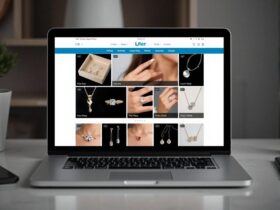With roughly two to three of every 100 visitors converting on your website (on a good day), it can be difficult to scale up your marketing efforts to make a Return on Ad Spend (ROAS) or Return on Investment (ROI). Online conversions are a numbers game, and the higher your conversion rate, the more effective your ad spend and marketing becomes. Here are some things to think about when improving your online conversion rate.
1. Create credibility and trust
With more competition online than ever before, it’s important to stand out from the pack. While a good-looking and functional website is a big part of it (more on that later), creating credibility is one of the biggest blocks when driving online conversions.
In the UK, research has shown that 96% of consumers use customer reviews in some way, and that 64% read reviews before purchasing online. So from your two to three conversions for every 100 visitors, it’s possible that without reviews you could be missing out on a large number of sales.
Luckily, nowadays it’s really easy to gather reviews from your current and previous customers and to encourage them to leave a review. Consider using one of the reputable online review companies, who will often automate the collection of product and company reviews for you. You can also ask for reviews via your Google My Business and Facebook Business accounts, and these can appear in the search engine results pages, boosting CTRs.
Another great way of demonstrating credibility is by showing social proof on your website, marketing assets and landing pages. Build trust by using reputable logos from your partners or previous customers, giving you an instant credibility boost.
2. Put your mobile experience first
With global mobile internet access now exceeding desktop access, it’s more important than ever to lead with a mobile-first web design strategy.

Not only does this apply to your website, but also to your marketing activity and, in particular, SEO and search engine PPC. With search engines now preferring good mobile experiences over those on desktop, it’s important that your website is optimized for smaller screens and quicker load speeds. That no longer means starting with a desktop website and making it responsive, that means designing your website with the mobile experience in mind first (and foremost). Hence, ‘mobile-first’.
Google have also launched Accelerated Mobile Pages (AMP) which have been adopted by many web developers due to the SEO boosts and enhanced user experiences available. AMPs are lightweight versions of desktop pages that load quicker because they use far less code, and with Google now adopting mobile-first indexing on its search engine, the mobile and tablet experience should not be ignored by online businesses.
For e-commerce stores in particular, it’s important that the purchase experience is user and device-friendly. By making the navigation simpler, considering touchscreen capabilities (that means no hovering over product options or right-clicking) and optimising your images, you can ensure that you’re making the experience as easy as possible for your visitors.
The last thing to consider is an easy check-out process. With an 86% abandon rate on mobile devices when shopping online, it’s important to keep things simple. That means no huge shipping fees or sudden hidden costs, plenty of payment options and no lengthy registration processes.
3. Improve your CTAS
Boost your conversion rate by creating clear call-to-actions, or CTAs. While ‘Sign Up Here’ can work, your visitors have seen it all before, and there are now much more compelling ways of convincing someone to convert. Give these a go:
- Try for free
- Get started
- Join the family
- Join free for a month
- Give us a try
- Let’s start
- Let’s go
- Yes, I’m ready!
Using more innovative CTAs across your website and online marketing can help drive action, so don’t be afraid to frequently test a range of CTAs to figure out which ones work best for you and your audience. It’s important to note that one size doesn’t necessarily fit all, so what works for your Facebook marketing strategy, may not work on your website. So, test, test, test!
4. Work on your customer service
Customer expectations for shopping online have increased dramatically over the past few years, and we now expect much more from our online browsing experience. With this in mind, one of the best ways of boosting online conversions is to prioritise your customer service.
Start by installing a (non-invasive) live chat function. There are plenty of free live chat tools available with easy installation now, and some even give you the ability to add FAQs as well as triggers that drive relevantly automated, but helpful, responses before escalating the chat to a human. If this option is available 24/7, it means that customers can get their queries answered quickly while still staying on your website, instead of getting a response a few days later, when their interest in your product may have dipped, or they might have bought from a competitor.

Another crucial way of developing your customer service is by offering a range of helpful perks for shopping with you. One example of this is utilising third-party logins such as Gmail or Facebook to expedite the purchasing process. You might also offer free delivery, a choice of payment options and a flexible returns policy or money-back guarantee. These are all relatively simple ways of boosting your conversion rate by increasing customer satisfaction and user experience. If these steps don’t work for you there is also the option of a conversion rate optimization agency.
5. Create urgency
Our final tip is not to be afraid to create a sense of urgency. Creating limited-time offers, using countdowns or even adding stock numbers (where applicable) are all great ways of encouraging your customer to convert sooner, rather than later.
In summary, conversion rate optimization doesn’t have to be a complicated task. By prioritizing your customer service and customer experience, small gains to your online conversions can make a big difference to your turnover and bottom line.














Leave a Reply